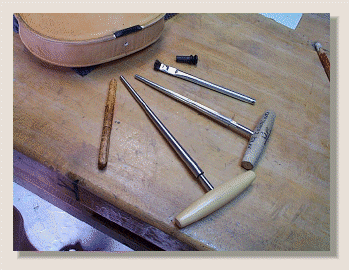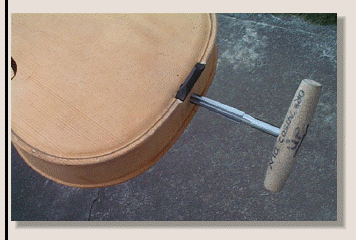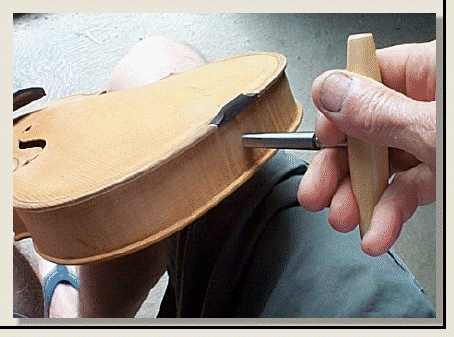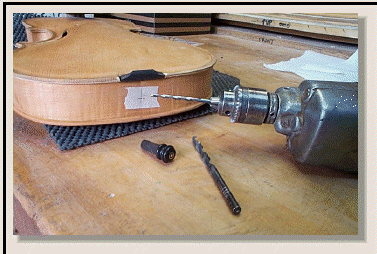..The end pin is located on the body centerline and slightly below the center of the rib vertically.
Here I am drilling a tiny pilot hole, to be followed by the 3/16" drill which will allow our 30-to-one taper reamer to start. Incline this hole slightly upward.
..Pictured are the tapered peg (end pin) reamer, the burnisher tool, a brush with shortened bristles (so it is stiffer); and the ebony wood end pin that is to be fitted .
The tapered wood reamer is turned (only) clockwise and frequently removed to brush out wood dust from cutting flutes. Continually check orientation by looking at the projection of the reamer from the side and also from above, caking corrections as necessary to keep reaming in line with the violin centerline {or angled slightly up as viewed from the side}.
If the ream is reversed (turned counter-clockwise), this action would tend to dull the cutting edges of the tool.
The idea here is to make a hole slightly smaller than the end pin (which I have prepared before hand and is tuned to a (227 1/2) HZ side Tap Tone {242 HZ end tap}, so that the hole can be cleaned up after varnishing for final (precise) fitting of the end pin.
Here I am burnishing the hole with a 30-to-one tapered smooth hardened steel burnsher which smooths the hole and makes it hold better. (Also used on the tuning peg holes. Turn only counter clockwise / opposite to the reamer)
Modified 1/2021
Page O16C_70







